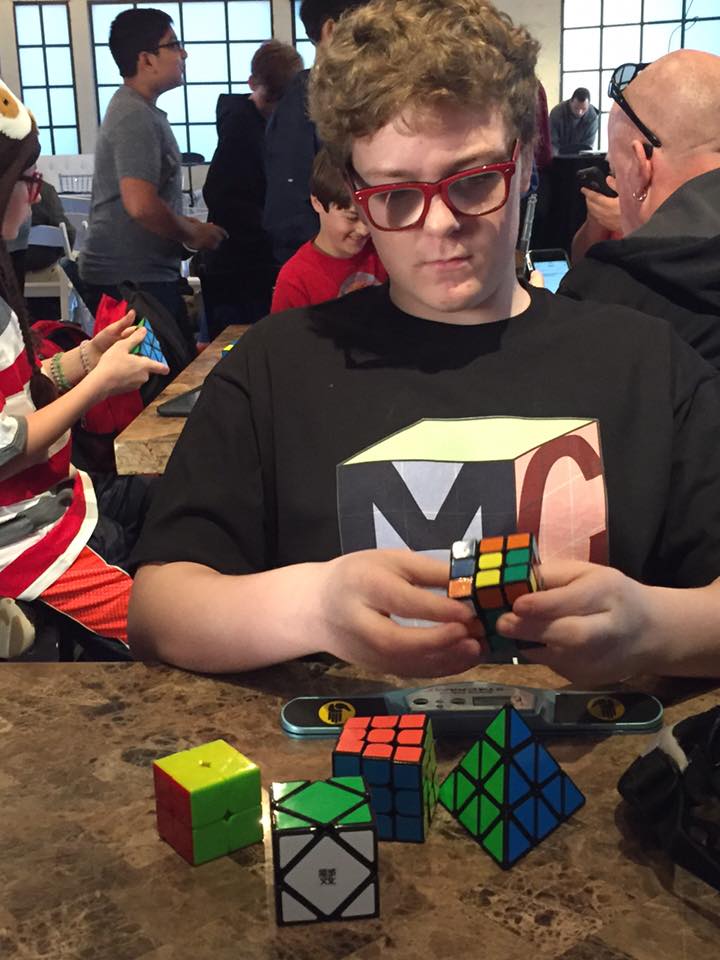Erno Rubik invented his “magic cube” in 1974. It appeared on toy shelves in his native country as the “Hungarian Magic Cube” in 1977, and arrived in America three years later in 1980. Rubik’s Cubes flew off shelves in record numbers. It was named 1980’s “Toy of the Year,” and puzzle cubes (both Rubik’s brand and knock-offs) continue to sell today. To date, more than 350 million Rubik’s Cubes have been sold, making it both the best selling puzzle and best selling toy of all time.
Most of us associate Rubik’s Cubes with the 1980s. Check out the cover of the next nostalgic book about the 80s you see and I’ll bet you see one of those cubes on the front cover. When I was in elementary school, Rubik’s Cubes were everywhere. People brought them to school and played with them during recess and on the school bus. I even remember finding one down in the bottom of my Christmas stocking one year. Later we had the Rubik’s Snake, those pyramid puzzles, and that weird Rubik’s Link the Rings thing (Sears has one for $131.98, if you’re interested), but it was the cube that stood the test of time. All of my friends tried solving them. A few of my friends learned the patterns and algorithms from books, while the rest of us perfect the art of disassembling and reassembling them (or worse, swapping the stickers around).
According to Wikipedia, the first world championship (organized by the Guinness Book of World Records) took place in Munich on March 13, 1981. The winner of the competition was Jury Froeschi, who was able to solve the cube in 38 seconds.
While 38 seconds seems pretty fast for someone like me (who hasn’t solved a cube in 30+ years and counting), my son Mason tells me it’s a pretty slow time. Mason can consistently solve a Rubik’s Cube in less than 30 seconds. His best time, I think, is around 22 seconds. The current world’s record is 4.9 seconds. The top 10 solving times range from 4.9 seconds to 5.81 seconds, each of which occurred since 2013.
Yes, the cube has returned. Mason and several of his classmates have memorized solutions to the cube (now posted freely on YouTube) and spend their free time “cubing,” and more specifically, “speedcubing.” At officially sanctioned Rubik’s Cube events (yes, really), competitors of all ages compete to score the best average time in one of several events. For those who don’t feel particularly challenged by the cube, there are categories for solving the cube with one’s feet, solving it with one hand, and solving it while blindfolded.
This past Saturday, Mason and his friend Brenden talked Susan into taking them to Dallas for an officially sanctioned (yes, really) World Cube Association event. I’m not sure if there were age groups or how the competition worked, but at the end of the day both Mason and Brenden had averages in the low 20s, which placed them in the middle of the field of 120-ish competitors. The winner of the 3x3x3 cube solving competition walked away with a winning time of 7.84 and an average of 9.01, so the boys have their work cut out for them.
Until then, Mason has other irons in the fire. He recently launched MasonCubes.com, a website where he reviews different brands of Rubik’s Cubes and shows how they work. (There are apparently many different models of varying quality.) He’s also set up an Amazon Affiliate account and has earned $6 to date on people buying cubes through his website. It beats flipping burgers.
While I don’t know that speedcubing is a skill that will be valuable to him later in life, I hope the website, social media accounts, and advertising (he wore an official MasonCubes.com t-shirt to the event) is.

